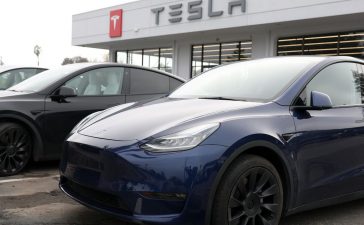The past 15 years have been the most difficult for western economies since the 1920s and 1930s. Public anger has risen as living standards have been squeezed by a prolonged period of weak growth. American politics is as ugly as it has ever been, while parties of the far right have emerged as powerful political forces in Germany, Italy, Austria, Finland, France and Sweden.
The new age of anger is a far cry from the six decades between 1948 and 2008. Sure, there were recessions – often deep ones – during that period but growth resumed and living standards bounced back. Certainly, there were protests – sometimes prolonged as in the demonstrations against the Vietnam war – but the young people who marched eventually secured a stake in the system.
The expectation was that the capitalist system would deliver and, for most people, it did. People were working fewer hours when the global financial system went pear-shaped in 2008 than they had been in 1948. What’s more, they lived longer, took more holidays, were able to purchase consumer goods that had previously been the preserve of the rich.
Looking back, there were warning signs that things were starting to go wrong. Western economies grew faster in the first half of the 1948-2008 period than in the second half. The spoils of improvements in productivity were increasingly grabbed by the better off. The environmental costs of constant expansion only gradually started to attract political attention.
In his book End Times, Peter Turchin says historically there have been five leading indicators of looming political instability: stagnating or declining real wages for workers; a growing gap between rich and poor; over-production of young graduates with advanced degrees; declining public trust; and exploding public trust.
“In the US, all of these factors started to take an ominous turn in the 1970s,” Turchin says. “The data pointed to the years around 2020 when the confluence of these trends was expected to trigger a spike in political instability. And here we are.”
For the past 15 years, central banks and finance ministries – advised by multilateral institutions such as the International Monetary Fund – have been seeking a way to bring back the good times. They slashed interest rates to zero, they printed money, they paid the wages of workers furloughed during the Covid pandemic; they subsidised the energy bills of consumers when gas prices rocketed after Russia’s invasion of Ukraine. But while nobody could say policymakers sat on their hands, this approach has been problematical in three ways.
First, and most obviously, it hasn’t worked. Growth and investment rates have not recovered to their 1948-2008 average. The eurozone looks set for a recession this winter, while the UK will at best move sideways. The outlier among the G7 leading western industrial nations is the US and even there a slowdown is looming. What’s more, young people are leaving university saddled with student debt and – unless they have the financial support of their parents – scant chance of buying their own home. Add in flatlining living standards and it is not hard to see why graduates are staying radicalised into their 30s and 40s.
The second problem is that central banks and finance ministries have grown increasingly anxious about deviating for so long from the economic orthodoxy, and even more so after the surge in inflation from 2021 onwards. So, they have raised interest rates, sucked money out of their economies by selling bonds rather than buying them, and – with the exception of the US – taken action to reduce budget deficits.
Even economists who opposed austerity in the aftermath of the global financial crisis of 2008 have raised eyebrows at the fact that the US is running a budget deficit of 7-8% of national output (GDP) despite strong growth and low unemployment.
Paul Krugman, writing in the New York Times (paywall) said: “The point is that the economics of deficit reduction are straightforward. It can be accomplished either by reducing social benefits or by raising taxes. Given that America has weak social spending compared with other countries, taxes are the most plausible route. But I don’t see any plausible political path to a tax increase that would make a large dent in the deficit.
“So serious deficit reduction, a bad idea a decade ago, is a good idea now. But I see no way to make it happen.”
after newsletter promotion
Krugman’s pay off line illustrates the third problem: turning the clock back to 2008 involves much higher levels of interest rates, public spending restraint, tax increases and an acceptance on the part of voters that governments can’t solve every problem.
That’s a lot to swallow, and policymakers need to be careful, particularly with public spending cuts. A study of 200 regional, national and European elections in eight countries – Austria, Finland, France, Germany, Italy, Portugal, Spain, and Sweden – between 1980 and 2015 found a strong link between austerity and support for extreme parties.
“Our results show that fiscal consolidations are associated with significant political costs: a 1% reduction in regional public spending leads to an increase in extreme parties’ vote share of about 3 percentage points,” the study says.
Last week, the National Institute for Economic and Social Research (NIESR) suggested a way out of the low-growth trap for the UK, although its message is applicable to other struggling economies. The thinktank called on the chancellor, Jeremy Hunt, to increase public investment from 2% to 3% of GDP for the next five years, saying spending on digitalisation, decarbonisation and transport infrastructure would crowd-in private investment and get the economy moving again. Eventually, higher levels of growth would mean higher tax revenues and stronger public finances.
That makes a lot of sense, especially given the alternative is another decade going nowhere.












